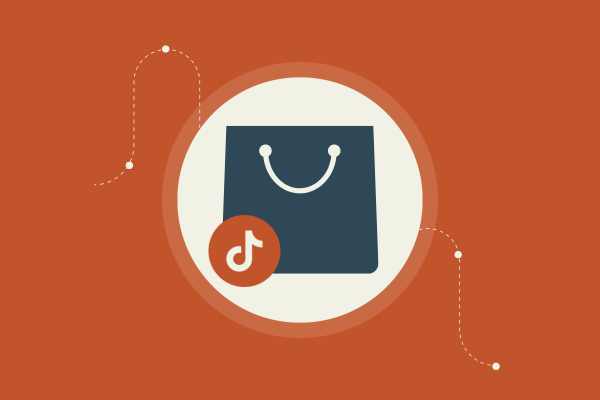What’s a Good Gross Margin for Your eCommerce Business?
Running an eCommerce business? You’ve got to know your numbers. Let’s talk gross margin.
A solid gross margin is between 50-70% for ecommerce. This means you’re keeping a nice chunk of those sales dollars after covering your product costs.
If your margin's not hitting the mark, don’t worry. There’s room to grow. From tweaking prices to cutting costs, little changes can make a big impact. The better your margins, the more freedom you've got to invest back into your business.
Want to maximize profits? It’s not just about making sales. It’s about making the right kind of sales. With a killer gross margin, you can do just that and set yourself up for long-term success.
Key Takeaways
Ideal eCommerce gross margin is 50-70%
Improving margins boosts long-term growth
Focus on sales quality, not just quantity
Understanding Gross Margin
Gross margin is key for your eCommerce game plan. It shows how much of each dollar earned is left after paying for the goods you sell. We'll explore what gross margin means and how it stacks up against net profit margin.
Defining Gross Margin
Gross margin tells you how much money is left after covering the cost of goods sold (COGS). It's a simple formula: Gross Margin = (Revenue - COGS) / Revenue.
Let's say you sell a product for $100, and it costs you $60 to make it. Your gross margin is 40%. This tells you that 40% of your sale price is profit after COGS.
Why is this important? It helps you figure out if your pricing strategy is solid. If your gross margin is too low, you may not cover fixed costs like rent or payroll.
A good gross margin is often between 50% and 70%. In some sectors like apparel, the average is around 52%. Remember, a high gross margin means more profit.
Gross Margin vs. Net Profit Margin
Gross margin and net profit margin are not the same. Gross margin focuses just on the cost of goods. Net profit margin digs deeper.
Net profit margin considers all expenses. It includes COGS, but also rent, marketing, salaries, and more. The formula: Net Profit Margin = Net Income / Revenue.
Imagine your net profit margin is 10%. This means 10% of every dollar of sales turns into actual profit.
A strong gross margin won't save you if operational costs eat up earnings. Understanding the difference helps manage costs better.
Both metrics matter. Keeping an eye on both gross and net margins will give you a full picture of your financial health.
Calculating Your Gross Margin
Knowing your gross margin is crucial as it shows how well you're turning revenue into profit. It’s all about how much you keep after covering the cost of goods sold.
The Role of Cost of Goods Sold (COGS)
COGS is key when figuring out your gross margin. It’s essentially what you paid to make or buy the stuff you’re selling. Think of it like the expenses tied directly to your product. This includes raw materials, manufacturing costs, and shipping.
High COGS means less money in your pocket. To optimize your profits, keep a close eye on these costs. This will help you see where you can save money and boost your margins. Lowering your COGS can make a huge difference in your overall business health.
Gross Margin Formula in Action
The formula is simple: Gross Margin = (Gross Profit / Revenue) x 100. First, you find your gross profit by subtracting COGS from revenue. Then, divide your gross profit by your total revenue. Multiply by 100 to get a percentage.
For example, if your revenue is $200,000 and your COGS is $120,000, your gross profit is $80,000. So, your gross margin would be (80,000 / 200,000) x 100 = 40%. This tells you that you keep 40% of sales revenue, which is solid for most eCommerce businesses.
Using a Profit Margin Calculator
Using a profit margin calculator can save you a ton of time and prevent mistakes. It automates the math and spits out your margin quickly. A calculator is handy when you’ve got lots of products with different costs and prices.
You plug in your revenue and COGS, and it does the rest. It helps ensure you're pricing right and keeping decent margins. So if you’re juggling multiple products or trying to streamline your operations, use a calculator to make your life easier and your margins clearer.
Industry Benchmarks and Comparisons
You want your eCommerce business to thrive, right? Knowing the benchmarks is crucial. Let's dive into what the numbers say about the market and how you can size up the competition.
eCommerce Sector Averages
In eCommerce, the average gross margin hovers around 36.56%. You’ve got manufacturers pulling higher margins compared to resellers or dropshippers. That's because they produce their own goods. Your target should be a net profit margin of about 20% for your online shop, according to some experts. If you’re in retail, your gross margin might sit closer to the industry norm of 45%. For more insights, check out some eCommerce benchmarks at Link My Books.
Easily size up your performance by comparing these averages. They aren’t just numbers—they guide your pricing and cost strategies. Keeping your margins healthy is key. Look for lean operations and streamline where you can. Knowing these benchmarks lets you set realistic goals.
Assessing Competition
To crush it in eCommerce, keeping an eye on the competition is essential. Look at their profit margins. Are they soaring, or just meh? Dive into market analysis tools or reports from sites like Bean Ninjas. They break down financial benchmarks to see who’s killing it and who’s struggling.
Understand what strategies work for them. Do they offer unique products or unbeatable prices? Your competitors’ benchmarks can shine a light on where you can tighten up or innovate. Stay nimble. Adapt your business to mimic winning tactics or fill gaps they miss. Being one step ahead makes sure you're not just surviving but thriving.
Factors Impacting Gross Margin
Getting your gross margin right is huge for your eCommerce success. Focus on controlling costs, managing inventory, and setting smart prices.
Optimizing Operating Costs
Your operating costs can eat into your profits if you're not careful. Look at ways to cut expenses. For example, compare service providers and choose the cheapest ways to ship. Automate tasks. Use software to handle customer service, inventory, and accounting. This slashes labor costs.
Invest in technology to streamline operations. Cloud-based tools can save you money in the long run. Review fixed vs. variable costs. Understand which costs you can cut without hurting your business.
Small savings can add up. When you run lean, your gross margin gets a boost.
Managing Inventory and Suppliers
Inventory is money sitting on shelves. You need to keep it tight. Don't over-order just because it might be cheaper. Hold only what you need. Monitor trends and change with demand.
Talk with suppliers to get better deals or payment terms. Building strong relationships can help you negotiate lower prices. This means better profit margins for you. Keep checking what your suppliers are doing. If they increase costs, you might have to pass it on to customers, cutting into margins.
Efficient inventory management makes sure more of your revenue stays in your pocket.
Understanding Pricing Strategies
Pricing can make or break your business. Get it right, and your margins look good. Start by understanding your market. Know what your competition charges. Look at your costs and set a price that ensures profit while remaining competitive.
Use tactics like tiered pricing or discounts for bulk buys. They can attract different customers and boost sales without cutting into margins. Consider value-based pricing where you price according to how much customers value your product.
Change prices as needed. Test and refine your strategies to see what works. Control pricing and you've got another lever to pull to improve margins.
Strategies to Improve Gross Margin
Want to boost your eCommerce profits? Focus on upselling and cross-selling, promote high-margin products, and streamline your accounting practices. Let's break it down.
Upselling and Cross-Selling Techniques
If you aren't using upselling and cross-selling, you might be leaving money on the table. Upselling means getting customers to buy a more expensive version of a product or add-ons. Cross-selling involves suggesting related products. These tactics can increase the average order value from each customer.
To pull this off, personalize your suggestions. Use customer data to offer relevant products. Timing is key—hit them with the right offer when they’re ready to buy.
You don’t have to complicate things. Simply show what others bought along with the main item. Or showcase why a premium version of a product is worth it. Finding those cross-selling opportunities can drive up your profits big time.
Product Bundling and High-Margin Products
Product bundling is like the peanut butter to your jelly. You group related items to create more value. By offering a bundle at a slight discount, you make the deal irresistible.
Why stop there? Focus on selling high-margin products. These are products that don’t cost you much but sell for a high price. Look for items that are exclusive or solve a significant problem for customers.
Bundles create a win-win. Customers feel they get more value; you increase sales. Don’t just sell; create packages that are better together and highlight those high-margin products.
Accounting and Bookkeeping Best Practices
You can’t improve what you don’t measure. That’s where good accounting and bookkeeping come in. Keep track of all costs and revenues. Understand which products contribute most to your bottom line.
Use bookkeeping tools to spot trends and insights. This isn’t just number-crunching. With accurate data, you can plan better and make smart decisions to improve your gross margin.
Handling bookkeeping might not be flashy, but neglecting it can cost you. Control your financial data, and use it to boost your strategy. This means understanding your costs and reallocating resources where they'll make the most impact.
The Impact of Customer Acquisition
Customer acquisition directly affects your profit margin. Spend wisely to attract new buyers and make sure they stick around for more. The better the strategy, the better your business can balance immediate expenses with long-term gains.
Customer Acquisition Costs Explained
Customer acquisition costs (CAC) determine how much you're spending to bring in a new customer. If this cost is higher than your profit, it spells trouble. You could be spending more to get customers than you're earning from them. To work this out, divide total marketing expenses by the number of new customers acquired. If your gross margin is lower than your CAC, it's time to rethink your spending and strategy.
In eCommerce, a good balance might be a 3:1 revenue to CAC ratio. Track your CAC closely using methods outlined by platforms like Shopify. This figure serves as a key health metric for your business. Spending too much eats into your profits; spend too little, and growth stalls.
Retaining Customers for Better Margins
Acquiring new customers isn't the end game. Keeping them is the key to boosting your margins over time. The more a customer buys, the better the return on what you initially spent to win them over. A happy customer sticks around and buys more.
Retention efforts can boost customer lifetime value (CLV), making your initial acquisition spend more worthwhile. To get this right, invest in customer service and loyalty programs. Over time, this strategy can do wonders for improving your profit margins. When customers keep coming back, you're setting yourself up for long-term success.
Retaining customers is often cheaper than finding new ones. Less spending and more loyalty mean higher profit margins.
Long-Term Financial Health
Building long-term financial health in your eCommerce business is like training for a marathon. You need the right strategies to ensure success. This means keeping a close eye on cash flow, understanding where you break even, and planning ahead so you’re not just surviving but thriving.
Ensuring Positive Cash Flow
Your cash flow is the lifeline of your business. You’ve got to keep more money coming in than going out. It sounds simple, right? But many people trip over the details.
Make sure you’re collecting payments on time, and double-check your expenses. Don’t let those pesky, unexpected costs catch you off guard. Keep a cushion in your bank account for those rainy days.
Using tools like accounting software can help you track every dollar. It’s worth investing some time to understand what these numbers mean for you. A healthy cash flow gives you freedom. You have the power to make decisions that could be game changers for your business.
Break-Even Analysis for Sustained Profitability
Getting your head around break-even analysis is crucial. It tells you exactly how much you need to sell to cover your costs. You don’t want to be in the dark about this.
Break it down. Calculate your fixed costs, those expenses that don’t change regardless of sales volume. Then throw in your variable costs, which adjust depending on how much you produce.
Once you’ve got these, figure out how many units you need to hit to start making profits. This isn’t just numbers—it’s knowing how to steer your business towards sustainability. Don’t just aim to break even, aim to push your margins to their full potential.
Planning for Future Growth
Growth doesn’t happen by accident. You have to plan it out, charting your course like a boss, all while managing your expenses wisely.
Start by setting clear goals. Then, align them with your market research.
Use your financials to guide your strategy and reinvent when necessary. Remember, adapting is key.
Predict those sales trends and stay ahead of the curve. Leverage data for smarter decisions.
Secure your business’s financial health for the long haul. And make sure your business is like a well-oiled machine, ready to scale up when the opportunity comes knocking.
Leveraging Technology
Using technology in your eCommerce business isn't just a nice-to-have—it's a necessity. By focusing on platforms like Shopify and leveraging automation, you can cut costs and boost your profit margins.
Using E-Commerce Platforms Like Shopify
Shopify makes life easier for eCommerce entrepreneurs like you. With Shopify, you can set up your store without any coding skills.
It offers tons of customizable templates and apps to optimize your business. You can quickly manage your product listings, track your inventory, and process payments all in one place.
This all-in-one platform helps reduce operational costs, freeing you up to focus on selling.
Plus, Shopify's analytics tools give you insights into what's working and what's not. You can see which products are flying off the shelves and which ones need a marketing push.
With this data, you can make smarter decisions to boost your margins.
Automation to Reduce Expenses
Automation is your silent partner in cutting costs. It takes over repetitive tasks, letting you focus on the big picture.
Use tools to automate order processing and customer service. Chatbots can answer common customer questions, saving you time and money. Meanwhile, automated emails can handle cart abandonment reminders, ensuring no sale slips through the cracks.
Think about automating inventory management too. With automation, you avoid overstock issues and reduce wastage. Less time on mundane tasks means you can spend more time strategizing and less time on operational details.
Incorporating automation frees up resources and helps you run a leaner, more efficient business. That means more profit in your pocket.







